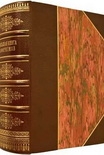Still Life Melissa Milgrom (notion reading list .txt) 📖

- Author: Melissa Milgrom
Book online «Still Life Melissa Milgrom (notion reading list .txt) 📖». Author Melissa Milgrom
Inside the Jamaica Inn, the Smugglers Bar, a dark slanty room that smelled like beer, was swarming with traders who knew one another from the antiques shops of London's Portobello Road. "We could have hired a coach," someone shouted. "There's a lot of money sitting here," another trader yelled, though you never would have guessed it from the scruffy people at the bar. But that was all camouflage, a strategy to downplay the seriousness with which some of the dealers went after their lots.
The collection, unusual as it was, wasn't nearly as eccentric as the people who knew every encyclopedic detail about it. People who knew, for instance, the complete history of Duplicate, the world-champion egg-laying Moray hen (she allegedly laid 462 eggs in one year). Or that the world-record 763-pound tuna (its massive glazed head was lot 571) had been reeled in after a nearly six-hour fight in 1933. Their business cards said it all: Ripley's Believe It or Not!, the Museum of Witchcraft, Ye Olde Curiosity Shop, Obscura Antiques & Oddities, Crime Through Time, and the Victorian Taxidermy Company. They were arriving en masse, in a downpour, and they were casing the joint with a complex mix of loss and schadenfreude, muttering, "How often does a Victorian taxidermy museum come up for sale?"
This was preview day. The next two days (September 23 and 24) were the actual auction. Yet television, newspaper, and radio reporters had already arrived in droves. Bonhams employees raced in and out of the coat-check room, now a makeshift office. They were prepared to take bids online; by phone, fax, or mail; through appointed agents acting for clients; and, of course, in person. People stood in line at the door, registering.
Not me. I knew that if I wanted to bid on, say, the scarlet ibis (I did!) or the bespectacled gentleman lobsters, I'd have to devise a clever strategy (a big distraction), and I wasn't about to go head-to-head with Ripley's Believe It or Not or Crime Through Time, not that they were after ibises or lobsters, per se, but someone in this room had to be. They hadn't come to this godforsaken place to leave empty-handed. Even so, in the commotion I heard, "That's all we do is sell stuff off. We don't value our own heritage."
Head auctioneer Jon Baddeley, specialist of all things "wild and wacky" (T. rex skeletons, Elton John memorabilia) and a regular on the BBC's Antiques Roadshow, was engaged in exotic problem solving: How to remove a one-ton elephant head from the first floor? Where to find a hotel with a helipad in quaint Cornwall? Was the rhino horn authentic? ("Absolutely!") A veteran with thirty-two years behind the podium, Baddeley called Potter's "one of the most unusual and eccentric collections ever to have been offered for sale." Yet, he said, despite phenomenal interest, no one had offered to buy the entire collection (for the owners' minimum price, reportedly £500,000, or roughly $800,000). With all the hype, I figured prices would be stratospheric. Baddeley said, "I sold an Alfa Romeo last week for five hundred fifty thousand pounds in ninety seconds. I've got to work harder tomorrow."
The inn was as dark and rambling as du Maurier's description, and its proud claim of ghosts seemed plausible. In the official souvenir guide, various specters, including that of murder victim Charlotte Dymond (d. 1844) and a dead man returning to finish his half tankard of ale, howl in the wind or walk through the cold walls of the du Maurier Restaurant. On this day, however, the only ghost likely to materialize was the taxidermist responsible for all this zaniness: Mr. Walter Potter.
Potter was born in 1835 in Bramber, Sussex, where his parents owned the White Lion Inn, a well-known hostelry. As a young man, Potter dropped out of the village school to work at the inn, eventually saving enough money to pursue his main passion in life: taxidermy. He began humbly enough with his deceased pet canary, followed by a family of his pet albino rats (lot 93), before advancing to dogs, cats, and common English birds. Soon Potter's parents gave him a loft above their stable to use as a workshop. But what to do with all those stuffed cuckoos, bramble finches, and nightingales?
Potter considered himself primarily an artist but was known as a naturalist, a term that covered a lot of ground in the early 1800s. Anyone who wanted to be a naturalist—from Charles Darwin to the lowly weekend egg hunter—was a naturalist. All you did was declare yourself one. Degrees were unnecessary; indeed, natural history wasn't even formally taught in school until the 1880s. Though by mid-century people had begun to specialize and call themselves botanists and zoologists, natural history was still the preoccupation of the passionate amateur driven by blind curiosity, and therefore it tended to be romantic and idiosyncratic—just like Potter's museum.
Eventually, Potter was able to support himself as a commercial taxidermist. However, stuffing dogs and cats for Victorian parlors would never satisfy his creative impulse. That would happen only after the Great Exhibition of 1851. Held in London's Crystal Palace, the fair celebrated progress: engineers, artists, and, of course, taxidermists displayed their finest work for a curious public hungry for science. If Potter attended (very likely), he would have seen the dramatic realism of Newcastle ornithologist John Hancock's gyrfalcons in action poses. His raptors captured the "jizz" (a birding term that means the general impression and shape), a significant breakthrough. Some displays audaciously featured "group mounts" of several animals posed together—a bit too much art and real estate for British museums. But nothing thrilled more than the taxidermic adaptation of Goethe's fable Reinecke the Fox,





Comments (0)